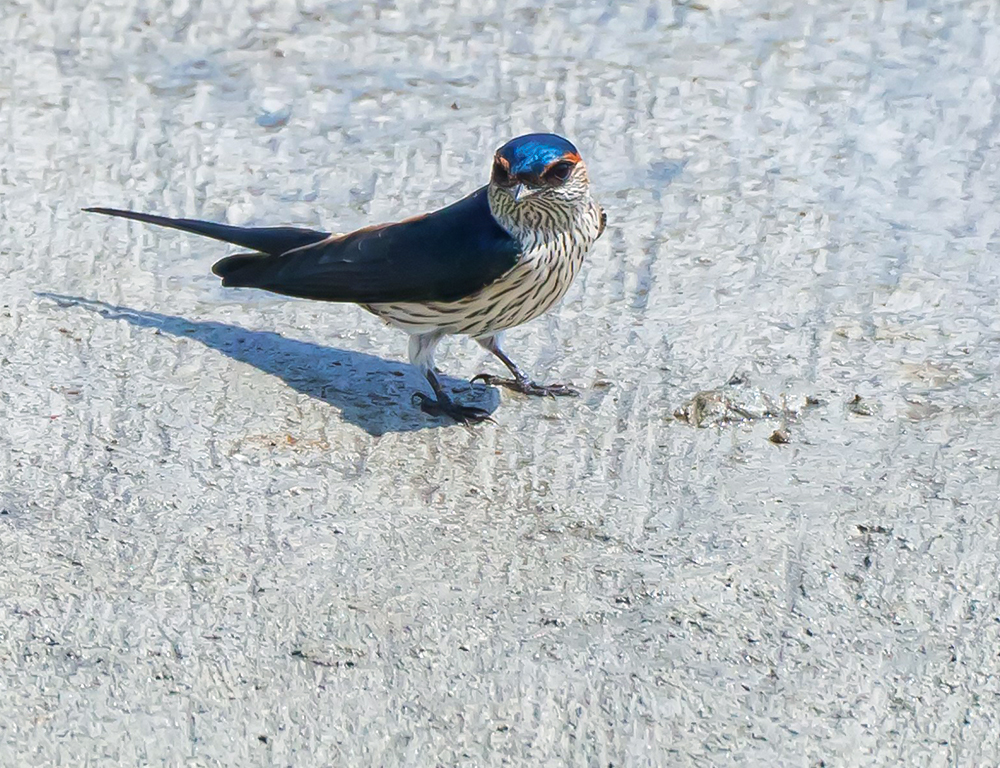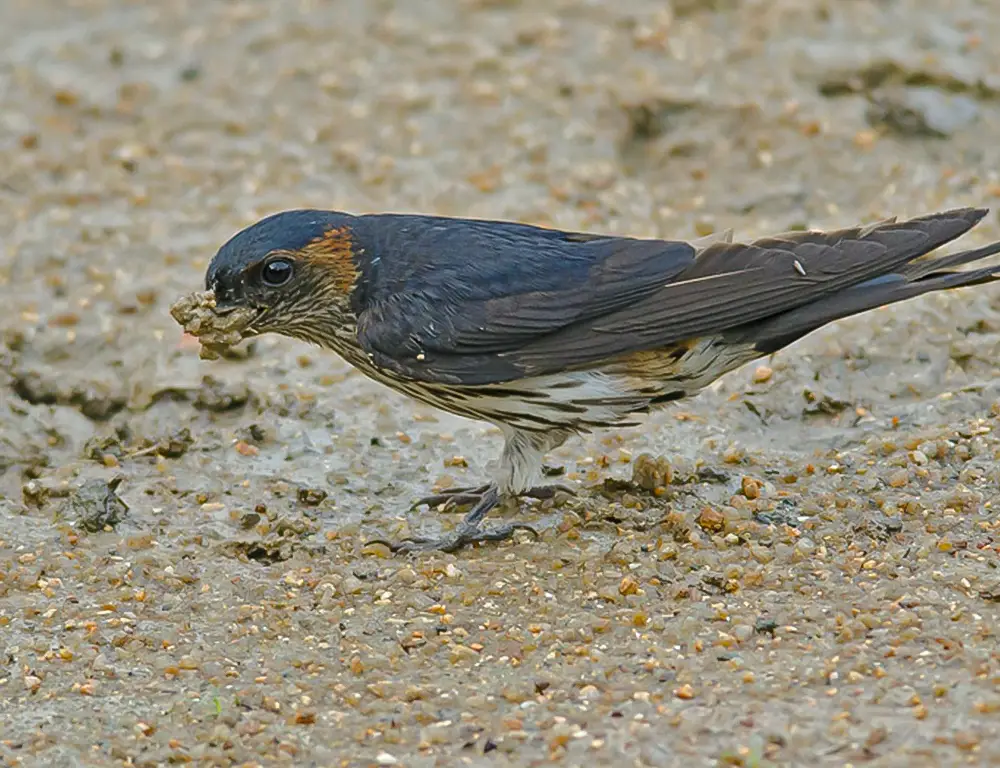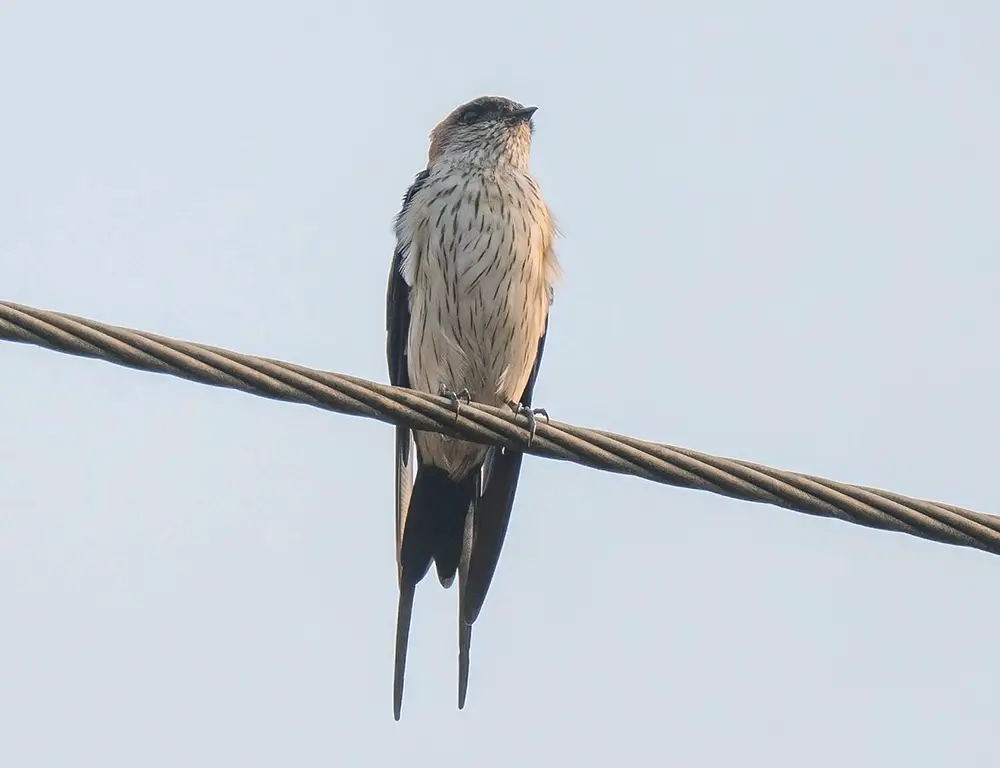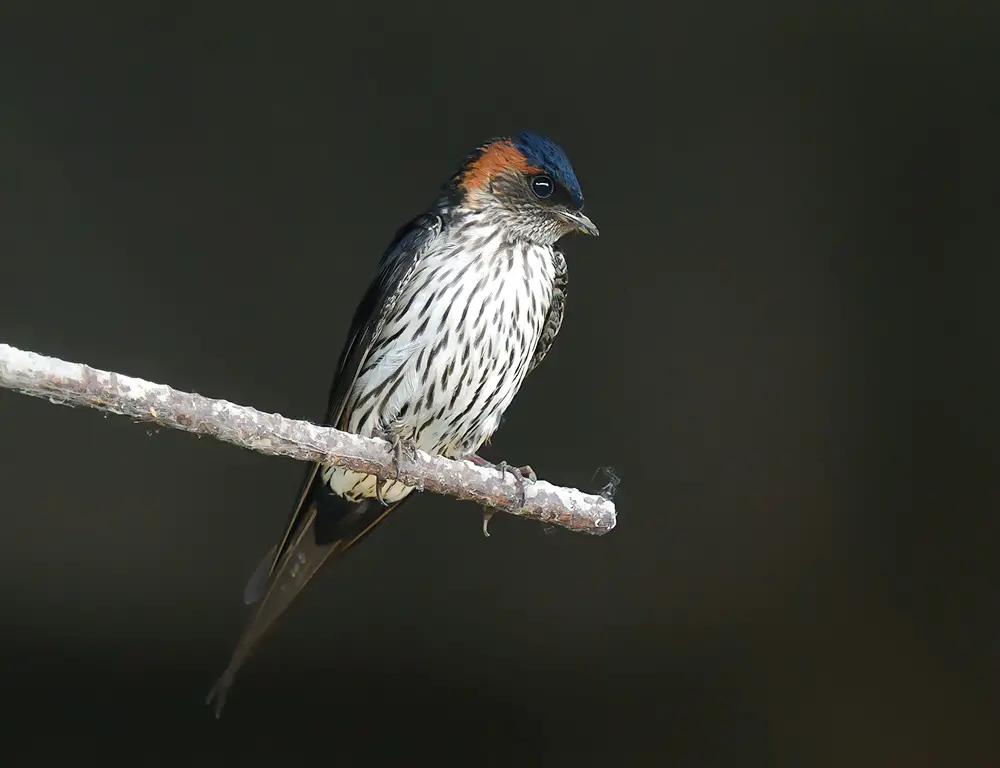Delving into the avian realm, the Striated Swallow emerges as a captivating subject of study. Indigenous to parts of Asia, this bird is stunning with its distinct coloration, behavior, and migratory habits.
Characterized by a dark blue upper body and red underparts, their name ‘striated’ stems from the fine white stripes adorning their underbelly—a feature integral to survival. Yet, their intricate mud nests on vertical surfaces and seasonal migrations truly distinguish them.
As winter descends upon northern territories, these swallows embark on a journey southward, showcasing remarkable endurance and innate navigational prowess.
In essence, the Striated Swallow encapsulates nature’s marvels, beckoning exploration into the intricate lives of avian species.

Physical Characteristics of the Striated Swallow
The Striated Swallow (Hirundo striolata) exhibits several distinctive physical characteristics that make it easily recognizable:
Coloration
The upper body of the Striated Swallow is predominantly dark blue-black, often displaying a metallic sheen when exposed to sunlight. Its underparts are white with fine brownish-gray striations, hence the name “Striated.”
Its rump is rusty-red, and its tail is black with prominent white tips on the outer feathers.
Size
While not particularly large, Striated Swallows are not tiny either. They averagely measure between 13 and 15 cm from beak to tail tip. Despite their modest size, they possess broad wingspans reaching up to 25-30 cm, aiding in their swift flight and maneuverability.
Sexual Dimorphism
Like many bird species, Striated Swallows exhibit sexual dimorphism in their plumage. Males typically have more pronounced colors than females, making them visually distinguishable.
Flight Pattern
Although males and females share similar sizes, they can sometimes be differentiated by observing their flight patterns and behaviors. These birds are adept at executing sharp turns and fast flights, crucial skills for catching insects mid-air or evading predators.
Habitat and Distribution of the Striated Swallow

The habitat and distribution of the Striated Swallow (Hirundo striolata) are diverse, allowing this species to thrive in various environments across its range:
Natural Habitat
Striated Swallows prefer open country areas but are also known to inhabit forests, especially those near water bodies like rivers or lakes.
They are adaptable birds and can nest in various locations, including cliffs, caves, and man-made structures such as buildings and bridges.
Geographical Distribution
The range of the Striated Swallow extends across South-East Asia and parts of Australia. Specific locations where they are commonly found include:
- India: From the foothills of the Himalayas down south.
- China: Spread out across Central & Southern China.
- Indonesia: Particularly in regions like Bali.
- Australia: Primarily in the northern parts.
These swallows have been observed at elevations of up to 2,500 meters above sea level, indicating their ability to adapt to mountainous regions.
Behavior and Diet of the Striated Swallow

The behavior and diet of the Striated Swallow (Hirundo striolata) are fascinating aspects of its ecology:
Nesting Behavior
Striated Swallows are skilled architects constructing intricate mud nests on vertical surfaces such as cliffs, caves, or man-made structures like buildings and bridges.
These nests are bottle-shaped and built with dried mud, forming a sturdy structure lined with soft materials like feathers or grasses.
Nest construction is a meticulous process, with the birds layering mud over several days until reaching an optimal thickness for insulation and protection.
Feeding Habits
Striated Swallows are primarily insectivorous, meaning insects comprise most of their diet. They feed on flying insects, including flies, beetles, and mosquitoes, which they catch mid-flight using their agile flight maneuvers.
Their hunting technique involves sharp turns, swift dives, and aerial acrobatics to capture prey effectively. Striated Swallows often hunt in large groups, increasing their chances of finding food and providing safety against predators.
Social Behavior
While Striated Swallows may nest individually or in small colonies, they are often seen foraging and hunting in larger groups. This social behavior enhances their foraging efficiency and protects predators.
Migration
Striated Swallows are known to be seasonal migrants. During winter, individuals from northern populations migrate southward to warmer climates.
The exact migratory patterns of this species, including the routes taken and the specific destinations, are still areas of ongoing research.
Conservation Status of the Striated Swallow

The conservation status of the Striated Swallow (Hirundo striolata) is currently classified as “Least Concern” according to the International Union for Conservation of Nature (IUCN).
This designation indicates that the species is not considered to be under immediate threat of extinction. However, several challenges and threats persist:
Threats
- Habitat Alteration: Human activities such as deforestation and urbanization are altering the natural habitats of Striated Swallows. This habitat loss can disrupt nesting sites and reduce available food sources.
- Climate Change: The changing climate may impact Striated Swallows’ breeding cycles and food availability, potentially affecting their reproductive success and overall population health.
Conservation Efforts
- Reforestation Programs: Restoring and replanting native vegetation in areas where habitat loss has occurred can provide vital nesting sites and foraging grounds for Striated Swallows.
- Protected Area Policies: Establishing protected areas, such as national parks and wildlife reserves, helps safeguard critical habitats for Striated Swallows and other wildlife, limiting human disturbance and habitat destruction.
Conclusion
The journey into the life and characteristics of the Striated Swallow reveals a fascinating story of adaptability and resilience. With its distinctive color patterns and diverse diet, this small bird plays a crucial role in maintaining ecological balance by controlling insect populations and pollinating plants.
However, like many species, Striated Swallows face threats from habitat loss due to human activities. Conservation efforts, including habitat preservation, public education, and wildlife protection laws, are essential for survival.
Further research into unanswered questions about their nesting preferences, responses to climate change, and mating rituals will deepen our understanding and inform more effective conservation strategies.
Ultimately, Striated Swallows remind us of nature’s intricacies and our responsibility to protect them.